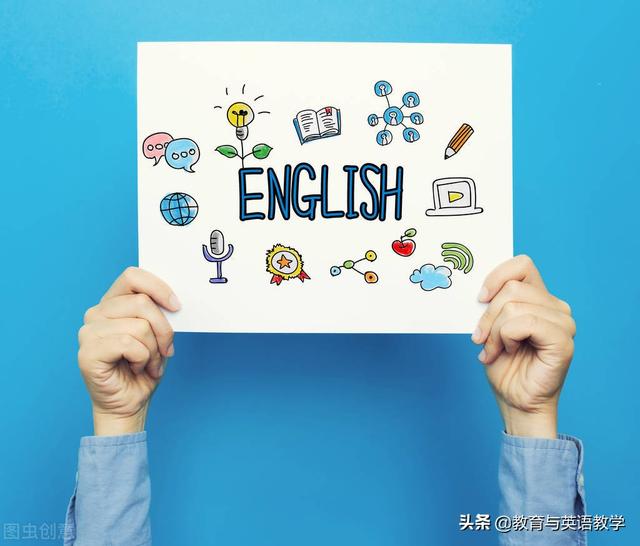
【重点短语】
Unit 1
1. have lots of jokes 有许多笑话 have a joke with sb / play a ljoke on sb和某人开玩笑
2. no laughing matter 没有可笑的事情
3. one of 名词复数/代词宾格复数+谓语单数 ……之一(one of those cartoons)
One of the 形容词最高级 可数名词复数+谓语单数….最…之一(one of the greatest photographers in the world. 世界上最伟大的摄影师之一)
4. make you laugh 使你发笑
5. have a word with sb = have a talk with sb 和某人说话have words with sb= quarrel with sb. 和某人吵架
6. give sb sth / give sth to sb 把某物给某人
7. be in deep trouble : 遇到大麻烦get into trouble 陷入困境
8. have a happy ending有快乐的结局
9. play a part in a story在一个故事中扮演一个角色
10. go over : ①去那边 ②复习,过一遍
11. take a photo / photos照相
Unit 2
1.a cute orange-white fish 一条可爱的橙白相间的鱼
2.win the heart of…赢得……的心
3. all over the world / all around the world全世界
4.Monkey King 猴王
5.Havoc in Heaven大闹天空
6. fly into飞入
7. the surface of the moon月球表面
8.make a mess 制造混乱be in a mess 乱七八糟, 处境狼狈What’s a mess!多么混乱!
9.above all / first of all首先
10. ever since从……开始(现在完成时标志)
11. a reporter with red hair 一个红头发记者
12. translate …into…把…翻译成为…
13. tell the story of/about…讲述……的故事
14. leave sb. on one’s own / leave sb. by oneself 把某人单独留下
15. be likely to do sth. It is likely that 从句。“很可能…”
16.return to the office / come back to the office回到办公室
17. the whole series of… …整个系列
Unit 3
1.set up建立,创立,成立
2.over 500 different newspapers 500多种不同的报纸
3. fall in love with... “爱上……,与……恋爱”
4 do good things for peole为人们做好事
5. show you some of my cartoons / show some of my cartoons to you给你看我的一些卡通
【重点句型】
1.It’s no laughing matter.这不是什么可笑的事情。
2.This isn’t one of those cartoons which make you laugh. 这不是那些把你逗笑的卡通中的一个。
3.That is good news. 那是好消息。
4. The cartoons that I like have lots of jokes. 我喜欢的卡通中有许多玩笑。
5. I’ve got a camera which has got his name on it. 我已经找到了一部相机,上面有他的名字。
6.It tells a story of a monkey who leads a group of monkeys against the rule of the emperer in heaven.它讲述了一个在天堂中带领着一群猴子反抗皇帝统治的一个猴子的故事。
7. It is above all the jokes played by the monkey that people remember.人们记得的首先是这个猴子开的玩笑。
【词语用法】
1. like用法: ①作动词:“喜欢”(反义词dislike)like doing sth / like to do sth 喜欢做…… ② 作介词:“像” (反义词unlike) be like / look like 看起来像……
2.every,each区别:
①. each 既可单独使用,也可后接名词,还可后接of短语;而every 后必须接名词,既不能单独使用也不能后接 of 短语。例如:Each is good. 每个都很好。(不能用every)Each of the students has seen it. 每个学生见过它。(不能用every)
②. each 指两者或两者以上的“每个”,every 指三者或三者以上“每个”,因此指两者时只能用 each。例如:There are trees on each side of the road. 路两边都有树。
③. We each谓语动词用复数;Each of us用于肯定句,谓语动词用单数。例如:We each have a good dictionary. =Each of us has a good dictionary.
3. “make 宾语 宾语补足语”句型:make用作使役动词表示 “使;使成为” 时,可跟复合结构,即“make 宾语 宾语补足语”,其中的宾语补足语可以是不带to的不定式、过去分词、形容词或名词。现将make的复合宾语结构小结如下:
①“make+宾语+n.” 意为“使、让某人 / 某物(成为)……”。如:We made him captain of our football team. 我们推选他作我们足球队队长。We made him our monitor. 我们选他当班长。
②“make+宾语+adj.” 意为 “使某人 / 某事(变得)……”。如:The news that our team had won made us very happy. 我们队赢了的消息使我们大家非常高兴。We must make the rivers clean. 我们必须净化河水。
友情提示:当宾语是不定式短语或从句时,多用it作形式宾语。如:The heavy rain made it impossible for us to go out. 大雨使得我们无法出去。
③“make+宾语+do sth.”(不带to的不定式)”意为 “使某人做某事”。如:What makes the grass grow? 什么东西使得草生长?Our teacher makes us feel more confident. 老师使得我们感到更自信了。
友情提示:在被动语态中,此类结构中省略的动词不定式 to 要还原。如:The boy was made to work twelve hours a day. 这个男孩被迫每天干十二个小时的活。Every day I am made to have an egg and some milk. 我每天不得不吃一个鸡蛋,喝一些牛奶。
相关链接:have, make, let等使役动词和see, hear, listen to, look at, watch, notice, observe 等感官动词都可接不带to的不定式作宾补。help后可带to,也可不带to。如:Let him do whatever he wishes to do. 他想干什么就让他干吧。Did you see him go out? 你看见他出去了吗?I often help my mother (to) do some housework. 我经常帮助妈妈做些家务。
④“make+宾语+V-ed(过去分词作宾补)”这个结构指宾语接受后面的那个动作,表示被动的意思,意为 “使某人 / 某事被……”。如:The strange noise made us frightened. 奇怪的声音使我们感到恐惧。The good news made us excited. 这个好消息使我们兴奋。
友情提示:通常情况下,make后的宾语是反身代词时,作宾补的动词要用过去分词,即:make oneself+V-ed (heard, known, understood)。如:He couldn't make himself heard above the noise of the traffic. 在交通嘈杂声中他无法使自己的声音提高到让别人听到。I think it is diffcult to make myself understood.我想让别人理解我太难了.
但有时,根据句子意思也可用其他形式。如:The little child stood on the chair to make himself look taller. 那个小孩儿站在椅子上,使他看上去更高些。
友情提示:现在分词作宾补和不带 to 的不定式作宾补的区别是:现在分词一般表示动作正在进行,而不带 to 的不定式则一般表示动作已经完成。如:I saw him putting his hand into his pocket. (动作正在进行) I saw him put his hand into his pocket. (动作已经完成)
【语法回顾】
1、there/here引导的倒装句:
当主语是指物的名词时,采用全部倒装。例如:Here comes the bus.( The bus comes here.为正常顺序) There goes the bell. 铃响了。There comes our teacher. 我们的老师来了。
主语是人称代词时用第二种形式部分倒装。例如: Here we are. 我们到了。(Here are we 错)There he comes. 他来了。(There comes he. 错)Here you are. (给你)
2、强调句型“It is/was...who/that”的用法及注意事项:
⑴.强调句型的用法:在英语中,我们常用It is/was… who/that结构来突出强调句子的某一成分(一般是句子中主语,宾语或状语)。在这个句型中,it没有词汇意义,只是引出被强调的成分。如果被强调的成分是表示人的词,用who或that来连接都可以。如果是其它成分,则一律用that来连接。例如:It is my mother who/that cooks every day. It was yesterday that Tom passed in the maths exam
⑵.使用本句型的几个注意事项:
①.被强调成分是主语,who/that之后的谓语动词应该在人称和数上与原句中的主语保持一致。例如:It is I who am right. It is he who is wrong. It is the students who are lovely.
②.即使被强调成分是句子中的时间状语,地点状语,原因状语等,也不能用when,where, because,要用 that。例如:It was after the war was over that Einstein was able to come back to his research work again .It was in front of the bank that the old lady was robbed. It was because of the heavy rain that he came late.
③.被强调成分是作主语的代词,用主格,是作宾语的代词,用宾格。例如:It was he that helped me yesterday. It was me that he helped yesterday.
④.被强调部分既包括人又包括物,用that不用who。例如:lt was the things and people that they remembered that they were talking about.
⑶.强调句例句:
针对“I met Li Ming at the railway station yesterday.”句子进行强调。
强调主语:It was I that (who) met Li Ming at the railway station yesterday.
强调宾语:It was Li Ming that I met at the railway station yesterday.
强调地点状语:It was at the railway station that I met Li Ming yesterday.
强调时间状语:It was yesterday that I met Li Ming at the railway station
⑷.谓语动词的强调:
It is/ was ... that ... 结构不能强调谓语,如果需要强调谓语时,用助动词do/ does或did。例如:Do sit down. 务必请坐。He did write to you last week. 上周他确实给你写了信。 Do be careful when you cross the street. 过马路时,务必(千万)要小心啊!
,




